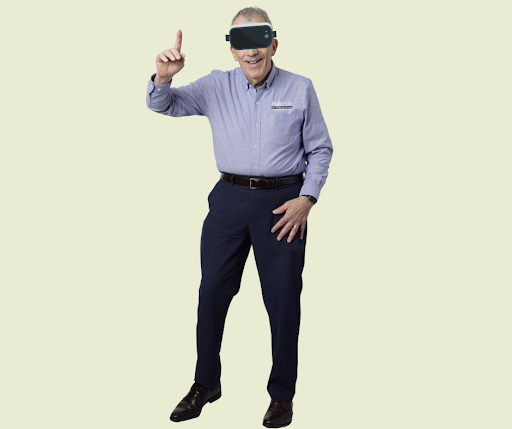
In the fast-evolving landscape of commercial real estate (CRE), staying ahead means embracing innovative technologies that redefine how properties are marketed and experienced. One such groundbreaking technology making waves is virtual reality (VR). By immersing potential buyers and tenants in lifelike, interactive virtual environments, VR is revolutionizing property tours and marketing strategies, offering unprecedented advantages in both efficiency and engagement.
Enhanced Property Tours
Traditional property tours often require physical visits, which can be time-consuming and logistically challenging for both real estate agents and clients. Virtual reality changes this dynamic by allowing users to explore properties remotely, as if they were physically present. Through VR headsets or even via desktop and mobile applications, prospective tenants or buyers can navigate through commercial spaces with 360-degree views, experiencing every detail from different angles and perspectives.
This immersive experience not only saves time but also enhances the decision-making process. Potential tenants can visualize themselves in the space, assess layouts, and gauge spatial dimensions accurately, all without leaving their current location. For international or remote clients, VR eliminates geographical barriers, enabling them to participate in detailed property inspections without the need for extensive travel.
Enhanced Marketing Strategies
Beyond virtual tours, VR opens up a realm of innovative marketing possibilities for commercial real estate. Property developers and agents can create compelling, interactive presentations that showcase key features, amenities, and potential uses of a space. These presentations can be customized to highlight specific selling points, such as architectural details, interior design concepts, or proximity to amenities like transportation hubs or business districts.
Moreover, VR can be integrated with other marketing tools, such as augmented reality (AR) overlays that provide real-time data about the surrounding neighborhood, market trends, or future development plans. Such immersive experiences not only captivate potential clients but also build trust and confidence in the property being marketed.
Advantages for Stakeholders
The adoption of VR in commercial real estate marketing offers tangible benefits to all stakeholders involved:
- For Developers and Agents: Streamlined property showcasing reduces the time properties remain on the market, potentially accelerating sales or lease agreements. Detailed virtual presentations can also attract a broader range of potential clients, including those seeking off-market opportunities.
- For Clients: Enhanced accessibility and convenience empower clients to make more informed decisions. VR tours provide a comprehensive understanding of a property’s potential, aiding in quicker evaluations and comparisons between multiple properties.
- For Investors: Virtual reality enhances due diligence processes by providing a realistic preview of a property’s condition and potential ROI (Return on Investment). This transparency can facilitate faster investment decisions and mitigate risks associated with traditional site visits.
Future Trends and Considerations
Looking ahead, the future of VR in commercial real estate appears promising. As technology continues to evolve, VR experiences will likely become more sophisticated and accessible, integrating seamlessly with other digital platforms and devices. Enhanced realism, interactive features, and virtual staging capabilities will further enhance the effectiveness of VR as a marketing tool.
However, challenges such as initial setup costs, technological integration, and user adaptation remain considerations for broader adoption. As these barriers continue to diminish and VR technology becomes more ubiquitous, its role in commercial real estate marketing is poised to become indispensable.
Virtual reality represents a transformative shift in how commercial real estate is marketed and experienced. By offering immersive property tours and enhancing marketing strategies, VR not only meets but exceeds the expectations of modern clients and investors. Embracing this technology not only positions real estate professionals at the forefront of innovation but also enhances efficiency, expands market reach, and ultimately drives greater success in the dynamic world of commercial real estate.
As the landscape continues to evolve, staying informed and adopting innovative technologies like virtual reality will be crucial for those looking to thrive in the competitive commercial real estate market.

